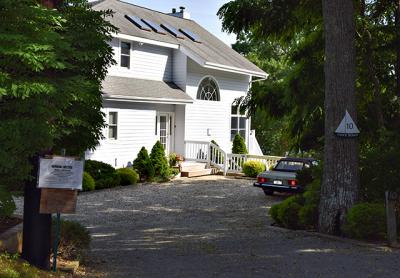Look Toward Expansion
Look Toward Expansion

The Springs School District’s search for an architect for the potential expansion of its overcrowded building ended last Tuesday where it essentially began. From among eight architectural firms that responded to the district’s November 2015 request for proposals for a large capital project, officials chose B.B.S. Architects and Engineers, the firm they had brought in to analyze the school’s space needs and complete a number of projects in the 2014-15 school year. It also is the firm that worked for free last summer with the district’s facilities committee to brainstorm solutions to the problem of overcrowding.
No maximum payment was included in the contract because Springs has neither approved a large capital project nor the costs associated with one. Instead, B.B.S. is to be paid 5-percent of a total project’s value. For instance, if a $15 million expansion were approved, the firm would receive $750,000. The full contract was not immediately available.
B.B.S. has also offered to credit back some of the money it earned during the 2014-15 school year, when it was paid $34,000 for certain work. The payment was criticized because the Springs School Board had not entered into a formal contract with B.B.S., which the board has since said was an oversight.
The district tried to do everything above board with this process, Carl Fraser, the district’s interim business administrator, said at the school board’s meeting on July 5.
“I will ask the board and the community to give this process a chance. This recommendation is one that we feel very comfortable with. We feel that this company will do the job that we want,” he said.
B.B.S., which had presented several designs for Springs School expansion in the past, was the lowest bidder and “came across as more experienced and their staff was superior in terms of the work they accomplished,” Mr. Fraser said. “So there was no hesitation on the part of the committee, which unanimously agreed that B.B.S. was the top architect to select.”
B.B.S. was also one of the four firms that submitted proposals when Springs sought an architect in July 2015. Those bids were tossed out in November, when school officials decided to begin a new search.
The selection of B.B.S. drew sharp criticism at the meeting from a resident, Carole Campolo. Ms. Campolo, who managed contracts for New York City for many years, said the bidding process seemed “heavily weighted in favor of B.B.S.” because of the access the firm previously had to the school. She also said she was troubled by the lack of a cap on the dollar amount B.B.S. was to be paid.
“You need to run to C.D.C.H. and get that space,” she said, referring to the building that housed the Child Development Center of the Hamptons, which closed at the end of June. The school board has said it is exploring leasing or purchasing the building as a potential solution to overcrowding.
Barbara Dayton, the school board president, addressed Ms. Campolo’s concern by saying that “passing the resolution doesn’t mean that tomorrow we’re going to go out and start flinging money around. . . . The can has been kicked down the road for a long time. A step like this says we are ready to move forward,” she said.





